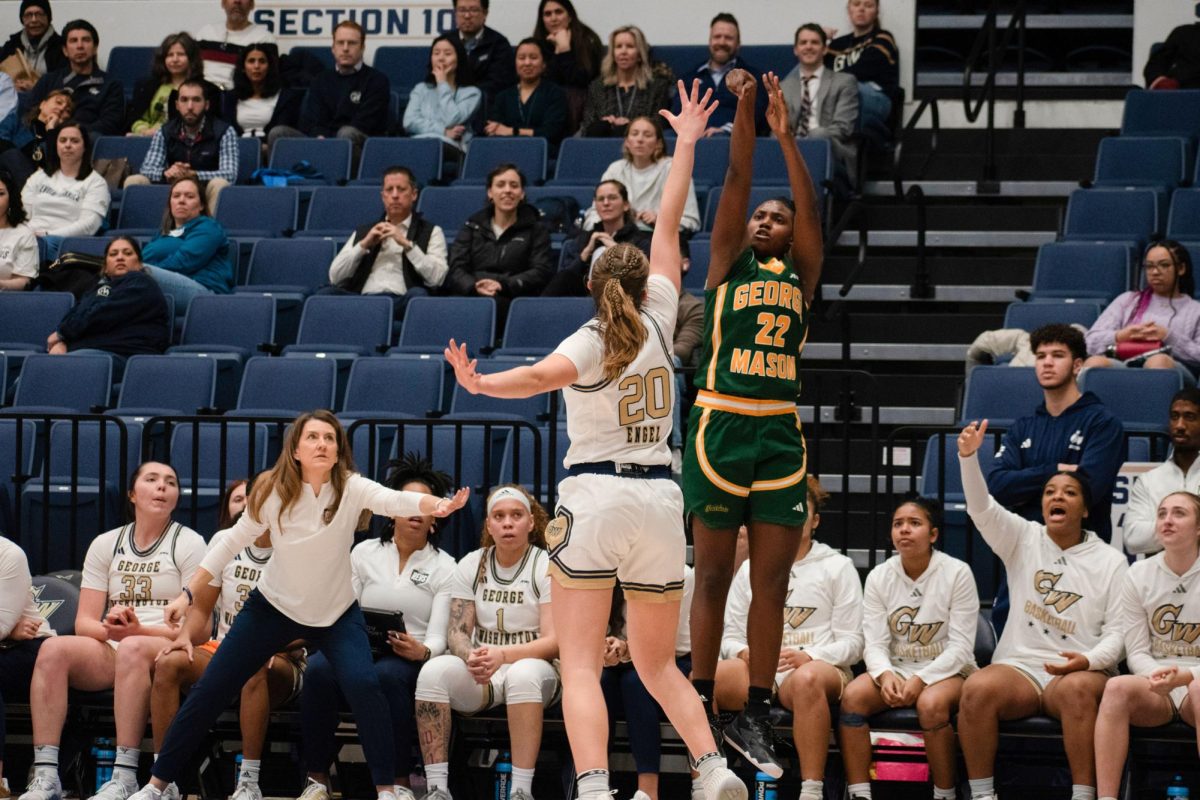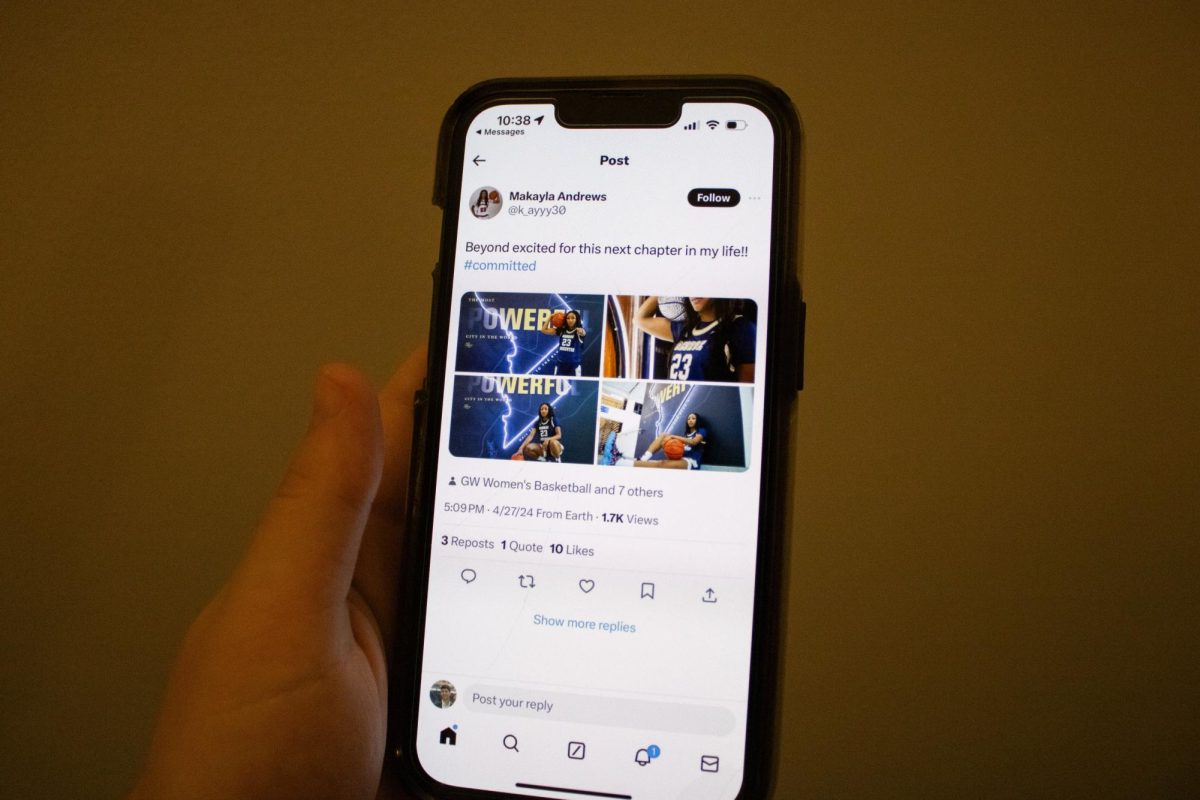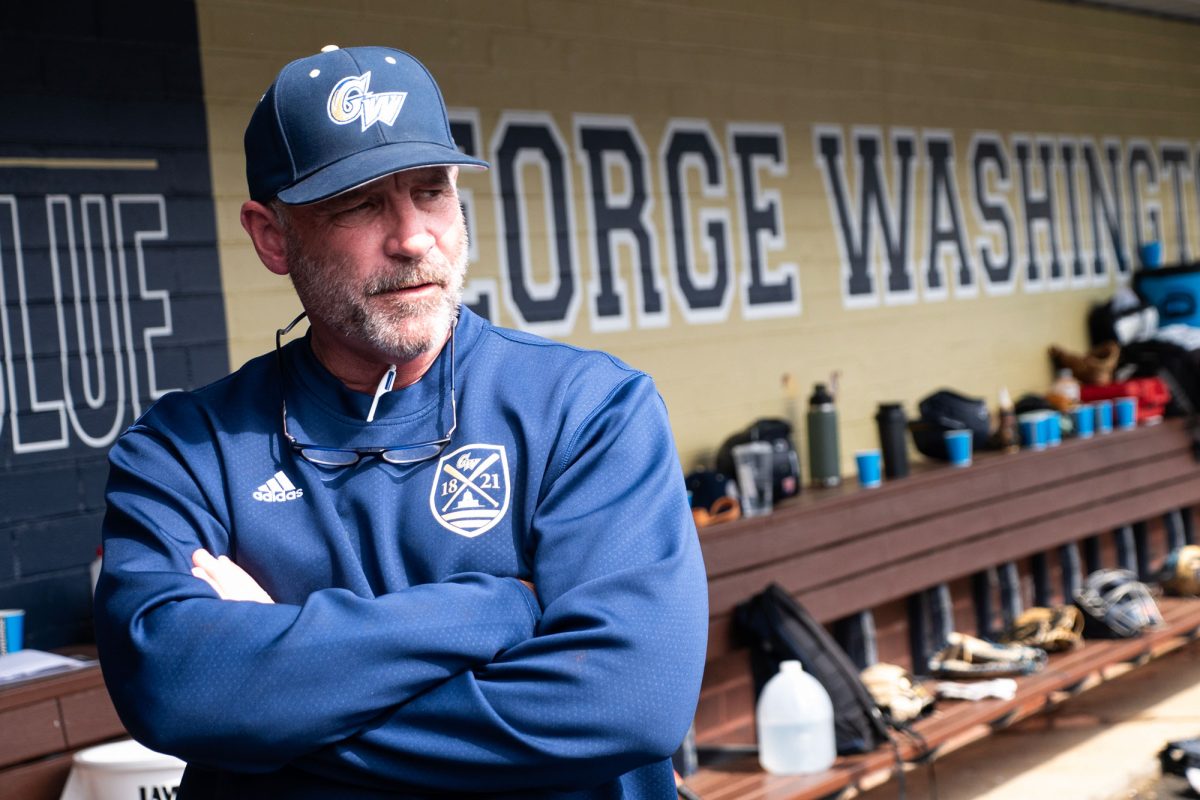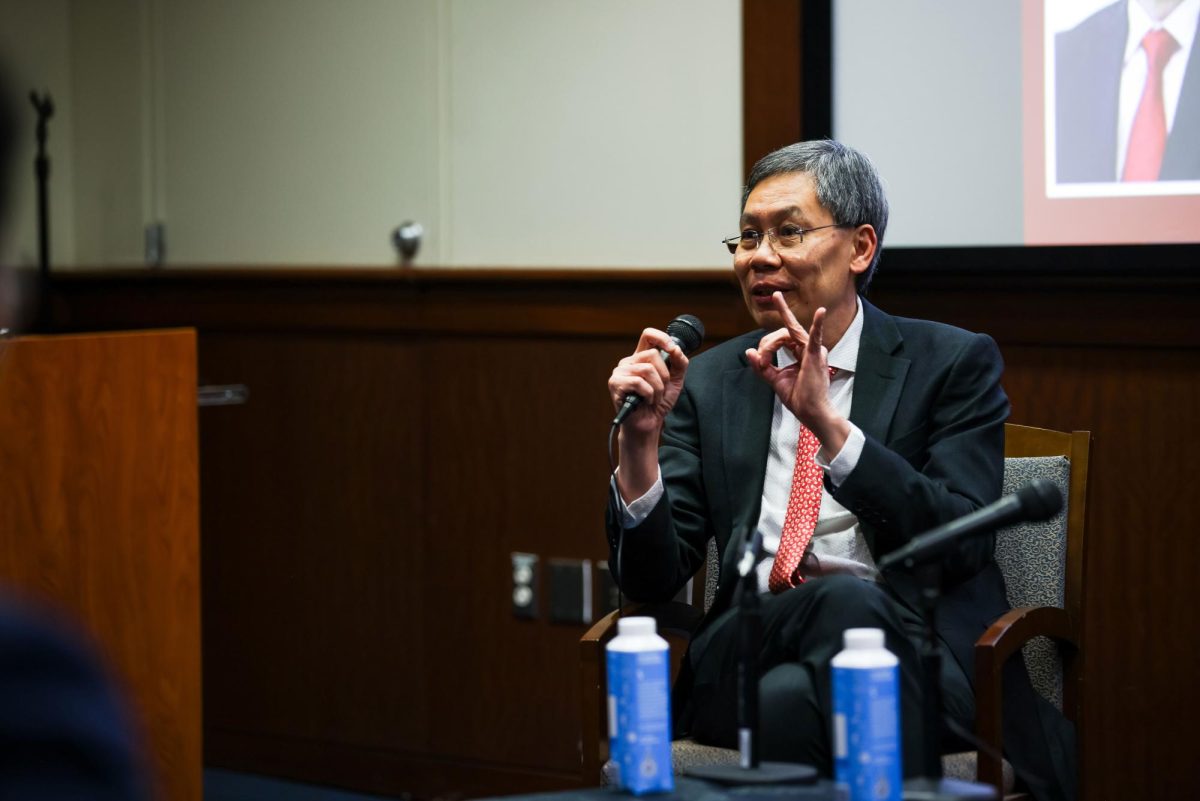Perhaps you heard Bob Faris died.
Perhaps you faintly recall a moment of silence before the frenzied opening minutes of the Massachusetts game. Or perhaps instead of reflecting on someone you’d never heard of, you yelled “Go GW!” or something.
Such is the ignorant bliss of youth.
Bob Faris probably would have understood. You see, Faris died an old man, as it should be. And he may have forgiven you for your irreverence, but the thing no one would tolerate is being a stranger. Everyone wants to be remembered, and Faris deserves that honor, for he was, and is (for legends never die) a GW legend.
Robert K. Faris came to GW in 1935 from Fremont, Neb., on a football scholarship. When he left with a degree in education and a major in history, he had varsity letters in three sports. The 6-2 Faris played football and tennis, but he excelled as a forward in basketball. In his three varsity seasons, he averaged 12 points a game (when the team averaged only 40), and led the team in scoring his junior and senior years (when he was teammates with “Red” Auerbach).
Playing under legendary GW coach Bill Reinhart, Faris’ first varsity team went 16-4 and (as there were no rankings or even tournaments then), a St. Bonaventure professor, Patrick Premo, has ranked that team the eighth-best in the nation that year. That would be the highest GW has ever finished. After completing his 42-16 college career, Faris was named GW’s first basketball all-American, making Chuck Taylor’s Converse third-team.
After graduation, Faris married his wife of 52 years, the late Nadine Nash Faris. He worked for the FBI, coached at several high schools (including Fremont, where he brought the school a football and basketball state championship), served as a naval officer in World War II, and spent three years as backfield coach at the University of Nebraska.
In 1955, he became athletic director at GW. In his tenure, GW won 19 conference championships, including the three won by Faris himself (1957, ’58, ’59 in the Southern Conference), as he became the winningest golf coach in GW history, winning 181 matches (how many sports can one guy master?). Under AD Faris, GW had its best football season (Associated Press No. 16 in 1956-’57). But in 1966 came the tough decision to scrap the football program, which had been hemorrhaging money for years.
Under Faris, GW became a founding member of what we now call the Atlantic 10 Conference, and, of course, maybe the greatest legacy of his tenure was the opening of the Smith Center in 1975.
Faris retired in 1982, moved to Naples, Fla., in 1987 and returned to Fremont in 1997.
There is much to envy in the life of a basketball player. The lasting benefits include the fraternity one joins. This fraternity, with entry based on athletic achievement, enables every player to call men like Bob Faris his brother.







